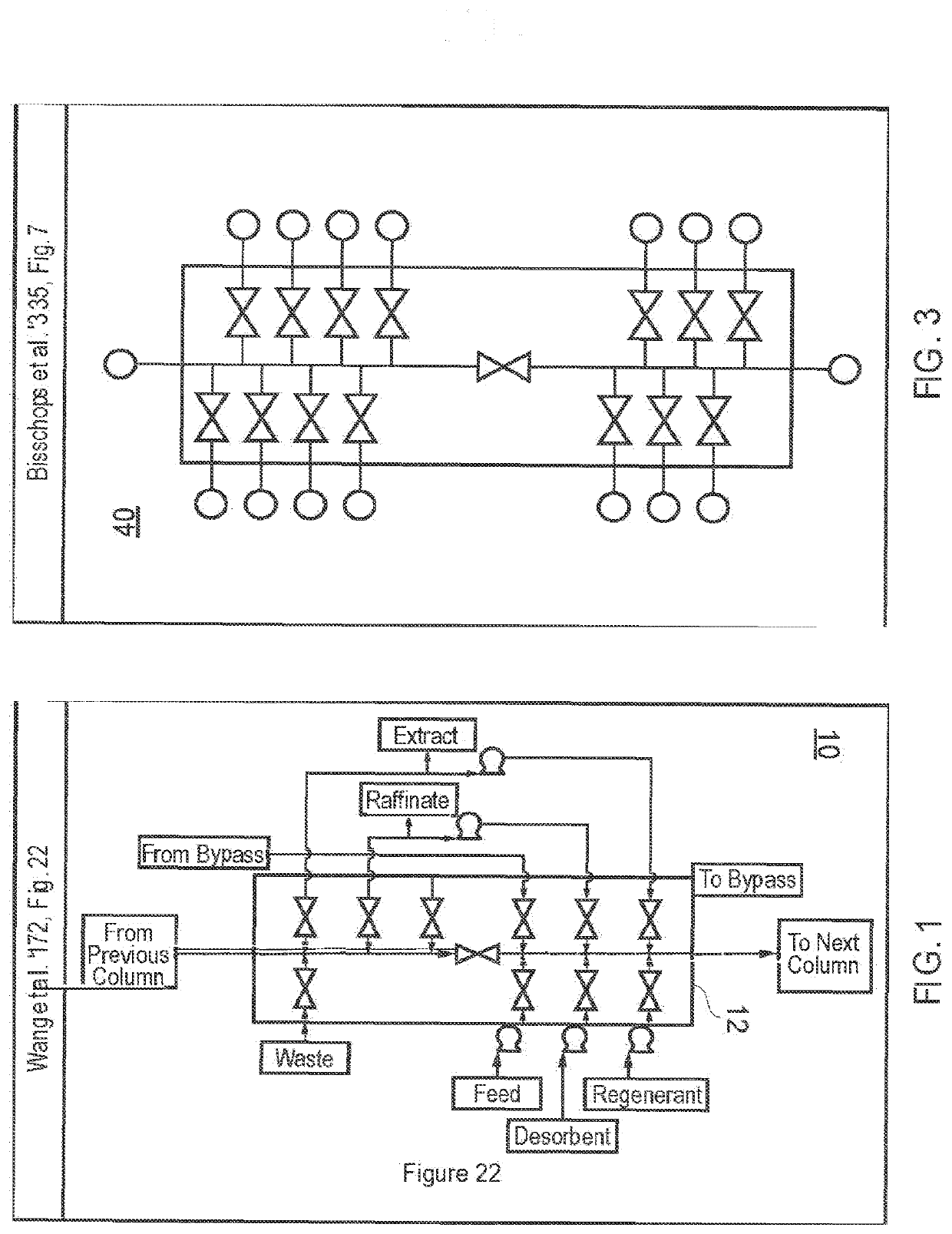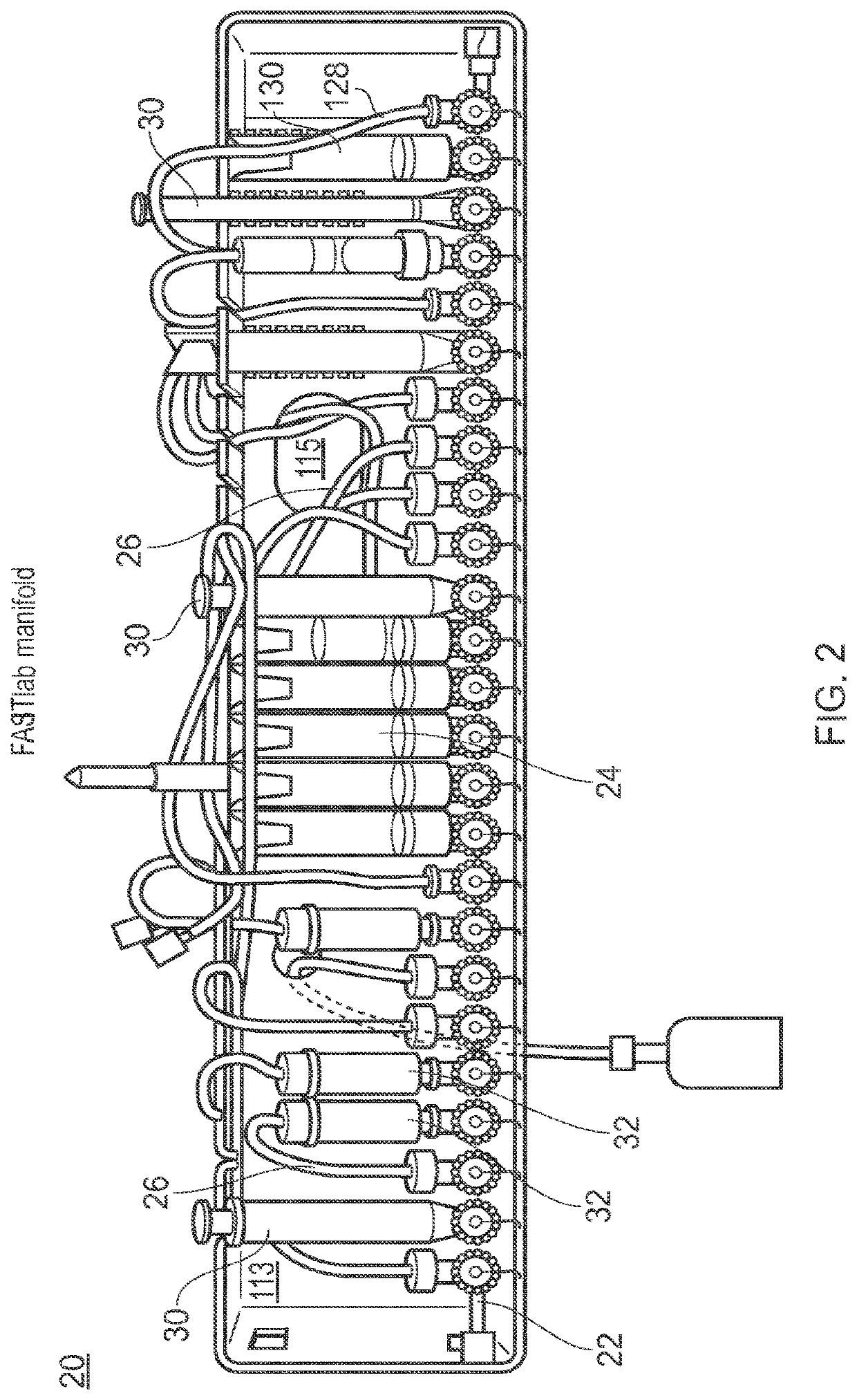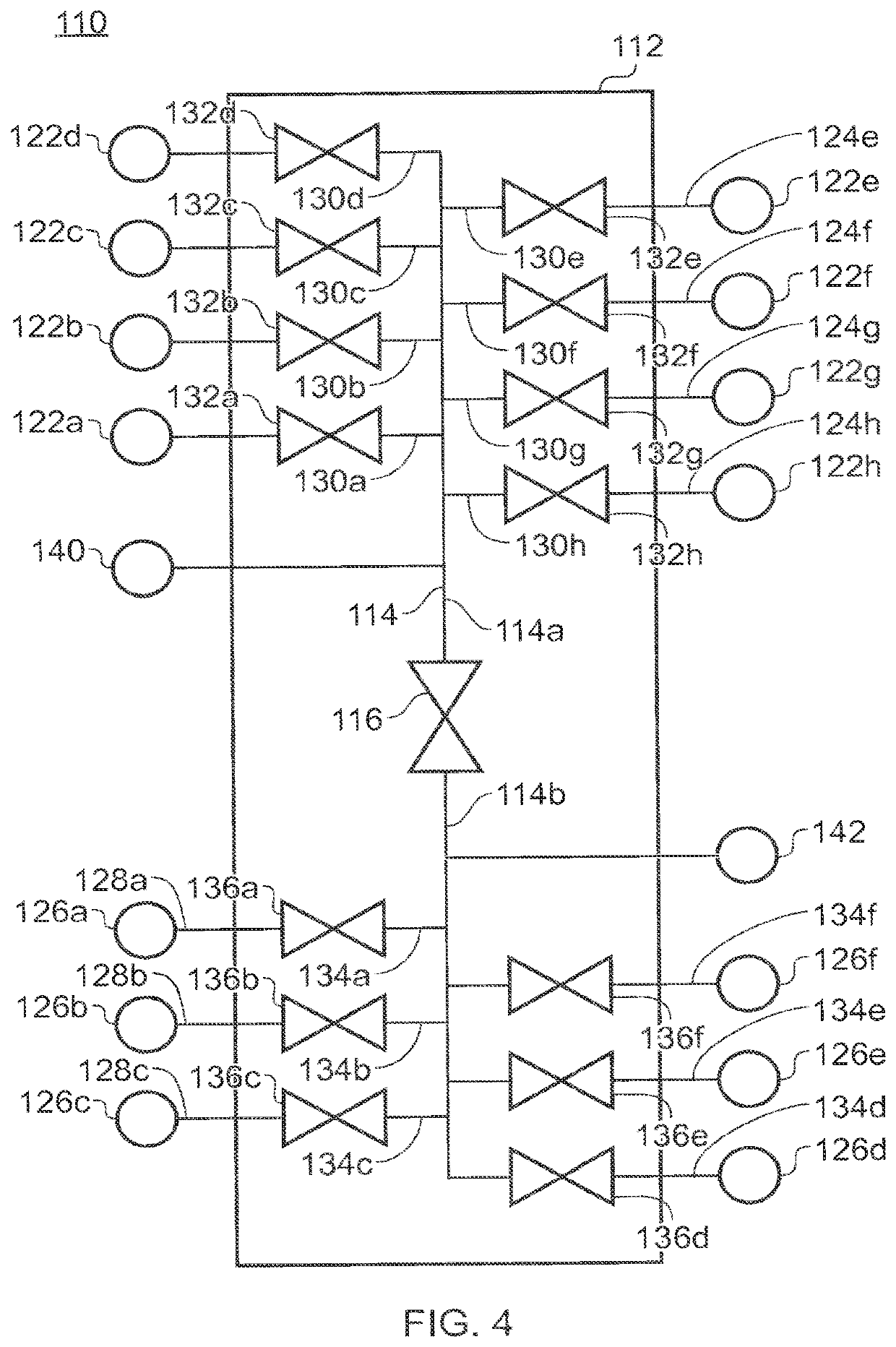Valve Manifolds for Simulated Moving Bed Chromatography
a valve manifold and chromatography technology, applied in the field of module chromatography system, can solve the problems of low specific productivity, difficult cleaning of equipment with complex internal geometries, and relatively inefficient mode of operation, and achieve the effect of minimizing dead spa
- Summary
- Abstract
- Description
- Claims
- Application Information
AI Technical Summary
Benefits of technology
Problems solved by technology
Method used
Image
Examples
Embodiment Construction
Definitions
[0030]In this document, the following terms shall have the following meanings:
[0031]Continuous Multicolumn Chromatography: Continuous Multicolumn Chromatography is a method in which multiple chromatography columns are interconnected to allow continuous operation with respect to the feed solution. This includes among others Simulated Moving Bed chromatography and Merry-Go-Round approaches.
[0032]Adsorbent: The Adsorbent is the stationary phase in the chromatography process. Commonly, this comprises particles, but it may also be a structured packing (e.g. a functionalized membrane or a monolithic structure). The Adsorbent normally comprises a matrix (silica, polymeric, polysaccharides, etc.) and may be functionalized (e.g. in case of ion exchange or affinity chromatography). In the case of a particulate Adsorbent, the Adsorbent may be in a packed bed or may be fluidized during the operation.
[0033]Column: A column is a single module that contains Adsorbent. In the case of a p...
PUM
| Property | Measurement | Unit |
|---|---|---|
| chromatography | aaaaa | aaaaa |
| ion exchange | aaaaa | aaaaa |
| affinity chromatography | aaaaa | aaaaa |
Abstract
Description
Claims
Application Information
 Login to View More
Login to View More - R&D
- Intellectual Property
- Life Sciences
- Materials
- Tech Scout
- Unparalleled Data Quality
- Higher Quality Content
- 60% Fewer Hallucinations
Browse by: Latest US Patents, China's latest patents, Technical Efficacy Thesaurus, Application Domain, Technology Topic, Popular Technical Reports.
© 2025 PatSnap. All rights reserved.Legal|Privacy policy|Modern Slavery Act Transparency Statement|Sitemap|About US| Contact US: help@patsnap.com



